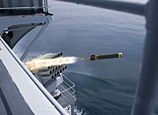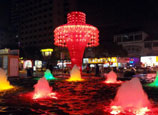
Delay in reporting incident raises concerns
Delay in reporting incident raises concerns, report Wu Wencong and Sun Ruisheng in Shanxi and Peng Yining in Beijing.
The lower area of the field, containing hundreds of withered cornstalks, was covered by a sheet of reddish-brown ice. Hundreds of people armed with iron picks and shovels were cutting holes roughly half a meter in diameter in the ice, clearing away the nearly 5-centimeter-thick layer. They then tipped large bags of activated carbon - charcoal treated with oxygen - into the half-meter-deep water underneath to absorb the contaminants.
That was the scene on Wednesday at a reservoir in Changzhi in Shanxi province. Following a leak of aniline, a derivative of benzene used in several industrial processes, including dyeing and the production of pigments, the reservoir was flooded by the toxic chemical which is believed to cause liver and kidney damage.
The leak, caused by a crack in a delivery pipeline to a storage tank, of 30 tons of aniline, which has a density similar to water, was erroneously directed into the reservoir, which has lain unused since 1993.
As temperatures dropped to -13 C, the upper layer of aniline froze, allowing the clean-up teams to break the "ice" into pieces and ship it away, while using activated carbon to absorb the chemicals remaining in the unfrozen water below.
Almost 5,000 local people, including soldiers, police, and workers have been involved in the cleanup, according to the local emergency management office. By Wednesday afternoon, 670 metric tons of contaminated ice, and more than 750 tons of wastewater had been cleared away.

















 A web user recently posted a photo of a twisted building in the suburb of Beijing, calling it "Tower of Large Intestine".
A web user recently posted a photo of a twisted building in the suburb of Beijing, calling it "Tower of Large Intestine".


![]()
